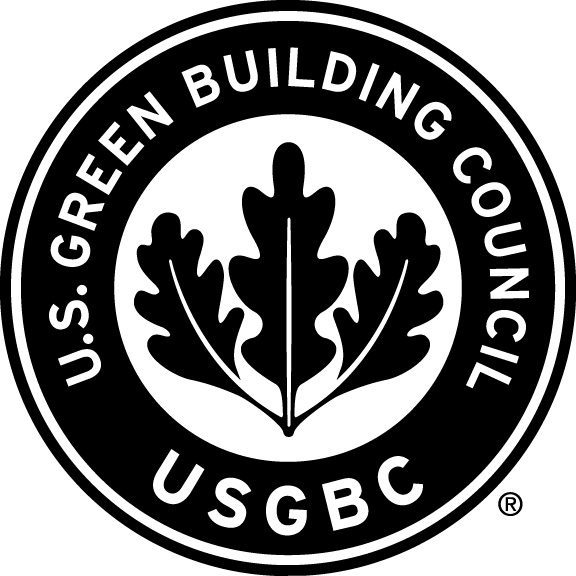More Than 130 Building Projects Turn to LEED’s Safety First Credits in Response to COVID-19

Green building strategies are helping companies develop and measure healthy, sustainable and resilient reopening efforts
WASHINGTON, D.C. – As companies, organizations and governments focus on safe and healthy reopening plans in response to the pandemic, more than 130 LEED projects have engaged the U.S. Green Building Council’s (USGBC) Safety First pilot credits to support those efforts. The credits provide sustainable and healthy best practices that align with public health and industry guidelines and help address critical operations including indoor air quality, water systems, cleaning and re-entry.
The Safety First credits are part of USGBC’s economic recovery strategy and reinforces that healthy people in healthy places is the fastest way to rebuild a healthy economy. The Safety First credits address critical health and safety adjustments building teams should consider in order to confidently welcome back tenants and visitors. The guidance can be used by any LEED project that has certified or is pursuing certification. The more than 130 projects pursuing the credits represent 20 different countries and territories.
“Health and safety has been a core part of LEED from the beginning, but the pandemic has revealed new ways we can leverage sustainability to better support people and communities during this crisis,” said Melissa Baker, senior vice president of Technical Core at USGBC. “These projects are taking the first step and reinforcing USGBC’s belief that in order to rebuild a healthy economy we have to focus on healthy people in healthy places.”
The credits are being used by commercial interior, new construction and existing building projects and have included offices, data centers, schools, retail and hospitality projects.
The PCL Glendale District Office in California recently achieved the Safety First: Re-Enter Your Workspace credit. Verdical Group worked with the PCL Construction Services team to make adjustments to the LEED Silver office space on the 15th and 16th floors of the LEED building. The space is operating at 25% capacity and the building team is keeping a daily journal of pandemic-related processes, procedures and feedback. Tenants are first surveyed about potential symptoms using a QR code before they enter the building. Once inside directional signage and hands-free door openers limit the number of surfaces occupants now need to touch. New signage was also placed on desks to indicate whether a space was recently cleaned. Verdical Group credits LEED with providing valuable direction and access to resources that help building teams think about changes that can support health and well-being while maintaining a commitment to sustainability.
“The Safety First guidance was a valuable overlay to the existing LEED practices already in place and it’s reinforced how design can meaningfully contribute to supporting occupant health,” said Drew Shula, founder and principal at Verdical Group. “Everyone’s trying to figure out how to come back from COVID-19 and re-enter their spaces. A lot of questions have come to us as the sustainability team member on the design team and because we’re involved with these rating systems and tools we can help make these spaces healthier and more sustainable. These credits are a great fit in that conversation.”
In addition to re-entry, cleaning has been a priority for building teams looking to reopen and ensure steps are being taken to support their health and safety. To make it easier to address a comprehensive cleaning and disinfecting program for COVID-19 that follows the Centers for Disease Control and Prevention’s (CDC) guidelines, USGBC introduced the Safety First: Cleaning and Disinfecting Your Space pilot credit. It encourages the use of cleaning and disinfecting products that are better for people and the environment, but also focuses on worker safety. The credit recognizes three programs that have contributed to training more than 10,000 frontline workers in more than 1,300 buildings:
- Thomas Shortman Training Fund: Cleaning for COVID-19 & other Infectious Diseases
- Building Skills Partnership: Infectious Disease Certification Program
- Building Service Contractors Association International (BSCAI): COVID-19 Disinfection & Safety Course
Training has also been used by over 100 cleaning service providers including Harvard Maintenance, Janitronics, MSNW and Office Pride.
The Safety First credits for buildings also provide guidance on indoor air quality and ventilation, as well as water system recommissioning. Credits for cities and communities are also available and support pandemic planning and response. Best practices outlined will continue to evolve as more is learned about the virus that causes COVID-19 and the latest update includes a new credit that emphasizes data and measurement as part of reopening. It leverages the new Arc Re-Entry offering that helps benchmark and document infection control policies and procedures, collects and analyzes related occupant experiences, and measures and tracks indoor air quality factors, such as carbon dioxide, relative humidity and particulate matter.
The pandemic has highlighted critical ways green building practices can support health and create more resilient buildings, cities and communities. The topic of buildings and health will be explored further on October 22 at the Greenbuild Global Health & Wellness Summit. Registration for the conference is open.
About the U.S. Green Building Council
The U.S. Green Building Council (USGBC) is committed to a prosperous and sustainable future through cost-efficient and energy-saving green buildings. USGBC works toward its mission of market transformation through its LEED green building program, robust educational offerings, an international network of local community leaders, the annual Greenbuild International Conference & Expo, the Center for Green Schools and advocacy in support of public policy that encourages and enables green buildings and communities. For more information, visit usgbc.org and connect on Twitter, Facebook, Instagram and LinkedIn.


